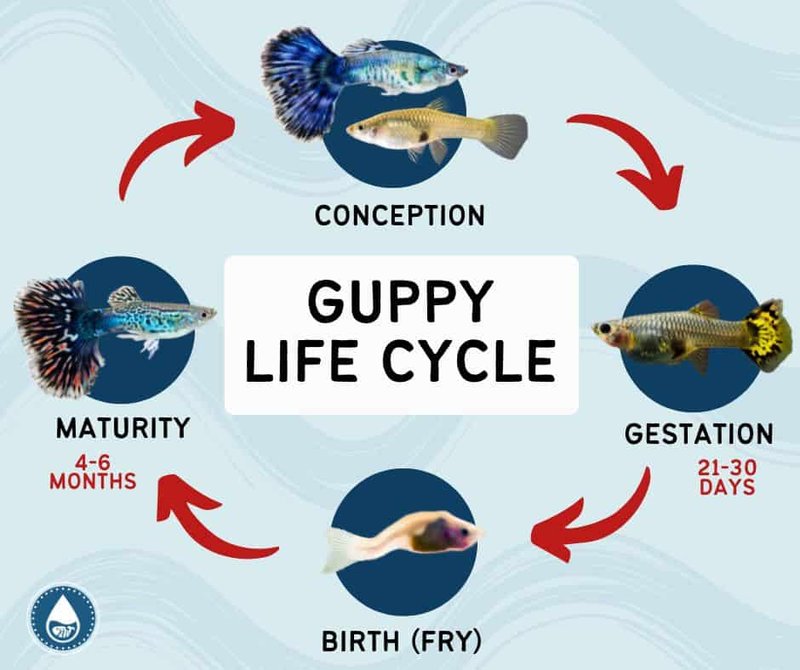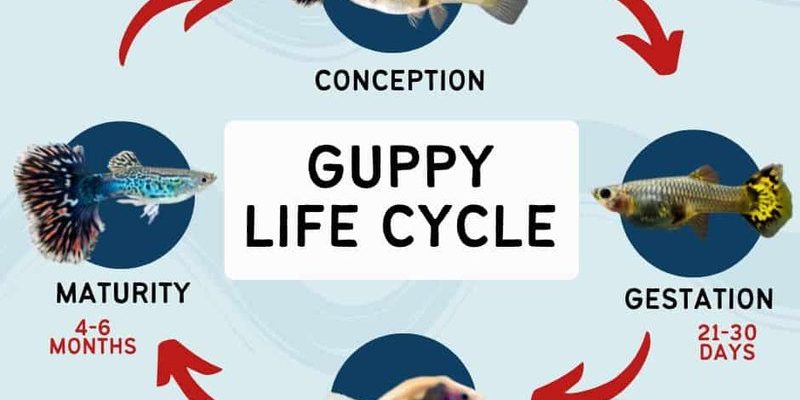
Essentially, guppy tapeworms reproduce in a rather remarkable way, turning the aquatic habitat into a breeding ground for their young. These tiny creatures not only rely on their host fish to survive, but they also have some interesting methods of laying eggs and developing larvae. If you’re interested in the life cycle of these organisms and how they interact with their guppy hosts, you’re in the right spot! Let’s dive into the world of guppy tapeworm reproduction.
What Are Guppy Tapeworms?
First things first—let’s clarify what guppy tapeworms are. These are parasitic flatworms that belong to the class Cestoda. They typically inhabit the intestines of guppies, feeding off the nutrients from their host. Imagine them as uninvited dinner guests who simply don’t leave. Plus, these tapeworms can grow quite large, often measuring several inches in length.
Besides guppies, these tapeworms can also infect a variety of other fish species. They thrive in freshwater environments—just like guppies do. This means that if your aquarium is home to guppies, it’s essential to keep an eye out for signs of tapeworm infestation. If you don’t, your fish might end up being more than just colorful swimmers; they could be hosting a family of unwanted parasites.
How Do Guppy Tapeworms Reproduce?
Now, let’s talk about how guppy tapeworms go about reproducing. They primarily reproduce asexually, which is pretty fascinating. Instead of needing a mate, these tapeworms can produce segments known as proglottids. Each proglottid can develop its own reproductive organs, which means a single tapeworm can produce hundreds of eggs all by itself!
When considering how this works, think of each proglottid as a little factory churning out eggs. As older proglottids mature, they detach from the main body of the tapeworm and are expelled through the host’s feces. This process allows the eggs to enter the water, where they can eventually hatch and continue the life cycle of the tapeworm.
Eggs: The Next Generation
Once the proglottids are released, they don’t just float aimlessly in the water. They carry a number of eggs, which are small and nearly invisible to the naked eye. Typically, a single proglottid can contain thousands of eggs, and these eggs are quite resilient. They need to find a suitable environment to hatch, often in bodies of water.
Here’s the interesting part: for guppy tapeworm eggs to develop properly, they need to be consumed by an intermediate host, such as small crustaceans, before they can infect fish again. This means that the life cycle of guppy tapeworms is a bit of a relay race. The eggs have to pass through another organism before they can reach their final destination: the intestines of a guppy.
Larvae Development and Growth
Once a guppy—or another fish—consumes the intermediate host, the larvae are released into the fish’s intestines. Here, they latch onto the intestinal wall using hooks and suckers. This stage of development is crucial, as it allows the tapeworm to grow and mature inside the guppy. It’s like moving into a new apartment and getting comfortable.
As the larvae grow, they develop into adult tapeworms, ready to begin the reproduction cycle all over again. The time it takes for larvae to mature can vary, but it generally occurs within a few weeks. This rapid growth is essential for the tapeworm’s survival and ability to thrive within their host.
Signs of Tapeworm Infestation in Guppies
Recognizing a tapeworm infestation in your guppies can be tricky, but there are some telltale signs to watch for. Here are a few indicators that might signal your fish have unwelcome roommates:
- Weight Loss: If your guppy is losing weight despite a healthy appetite, it could be a sign of parasitic infection.
- Decreased Activity: Infected fish may become lethargic and spend more time hiding than swimming around.
- Visible Segments: You might notice small segments or “grains of rice” in the fish’s feces or near the anus.
- Distended Abdomen: A swollen belly can indicate a significant infestation.
If you start noticing these symptoms, it’s best to consult with a veterinarian who specializes in fish. They can recommend treatment options to help your guppies get back to their lively selves.
Preventing Guppy Tapeworm Infestations
So, how can you keep your guppies safe from tapeworms? Here are some helpful prevention tips:
- Maintain Good Water Quality: Clean water can help limit the presence of potential intermediate hosts, like crustaceans.
- Avoid Overfeeding: Excess food can lead to waste accumulation, which makes it easier for parasites to thrive.
- Quarantine New Fish: Before introducing new fish to your tank, make sure to quarantine them. This can help prevent any potential cross-contamination.
- Regular Check-Ups: Keep an eye on your fish’s health and behavior. Early detection is key!
Prevention is always better than cure, especially when it comes to parasites that can affect the overall health of your guppies.
Understanding guppy tapeworm reproduction might not be the most glamorous topic, but it’s essential for ensuring the health of your aquarium. These parasites have a complex life cycle involving eggs, larvae, and a reliance on hosts for survival. By staying informed and keeping an eye on your fish, you can help your guppies live vibrant, healthy lives without the intrusion of tapeworms. So, keep up with good practices, and your guppies will thank you with their bright colors and energetic personalities!

